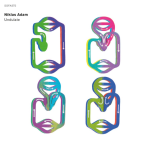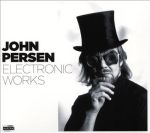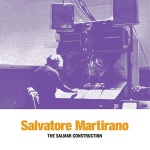This is the third volume in a series of compilation albums presenting works by a selection of composers of the Association for the Promotion of New Music (APNM). Like the second volume, the current volume focuses on electronic music. (The first volume was dedicated to chamber works.) It’s a well-rounded collection of purely electronic and electroacoustic works that amply demonstrates the creative range and depth of the composers represented.
The opening track, Erik Lundborg’s Miss Anderson, takes as its source material a 1987 synclavier improvisation, which Lundborg subsequently processed into a derivative work featuring cavernous, drifting sounds. Miss Anderson has a contemporary sound, in contrast to which Ionel Petroi’s Huit Dances Surprise evokes the classic sounds of earlier, analogue electronic music, although it was created on the Yamaha DX7, an early digital synth from the 1980s. Hiroya Miura’s Chromatograph, inspired by stop-motion animation, convincingly emulates the sound of rapidly played mallet percussion—the aural image of movement seen under a strobe light. Michael Gogins’ Three Trees is a generative work superimposing consonant parts that give it a harmonically pleasant, undulating quality. Aine Nakamura’s The koma top is not for spinning is a bilingual English and Japanese sound collage made up of samples of the composer’s voice speaking, singing, and vocalizing. When the Sky Clears, by Peter Child, is another voice-based work in which Child sets the reading of a text composed of repeated and permutated brief phrases against a background of computer-generated sounds. Louis Goldford’s De la detente combines fragmentary sounds for pure electronics and samples of voice with acoustic violin and cello, the latter played with techniques that both liken and contrast them to their electronic surroundings. Like De la detente, Avots by Krists Auzniek also combines a fixed electronic part with an acoustic instrument–glockenspiel, in this case. Against a backdrop of surging synthetic chords the glockenspiel plays random-sounding cascades of notes, giving the impression of a harmonically sophisticated set of wind chimes moving in an electronic breeze.
Daniel Barbiero

 In the late 70s, an interdisciplinary team led by the composer Iannis Xenakis developed the compositional tool UPIC out of an effort to transform drawings into synthesized sound.
In the late 70s, an interdisciplinary team led by the composer Iannis Xenakis developed the compositional tool UPIC out of an effort to transform drawings into synthesized sound.




